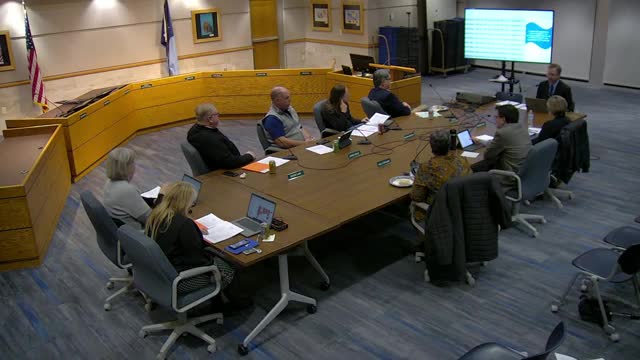Students excel in fall assessments despite national challenges
October 24, 2024 | Minnetonka Public School District, School Boards, Minnesota
This article was created by AI summarizing key points discussed. AI makes mistakes, so for full details and context, please refer to the video of the full meeting. Please report any errors so we can fix them. Report an error »

In a recent government meeting, education officials discussed the performance metrics of students across various grade levels, highlighting significant trends and challenges in academic assessments. The meeting focused on the results from the NWEA assessments, which are administered in both fall and spring to track student growth.
One key point raised was the disparity in performance levels between fall and spring assessments. Officials noted that while students often perform at or above grade level in the spring, their scores in the fall tend to reflect a lower grade level, particularly in reading. This phenomenon is attributed to the timing of assessments, with many districts opting to test only once a year, either in the fall or spring, often for financial reasons. In contrast, the district in question conducts assessments for all students from kindergarten through seventh grade twice a year, allowing for a more comprehensive understanding of student growth.
Data presented indicated that while math scores have shown consistent growth across cohorts, reading scores for second to third graders have not met expected growth targets, raising concerns about this specific group’s performance. The meeting also highlighted that special education students are starting the year at a level comparable to their peers, although they are still performing below national averages.
The performance of English Language Learners (ELL) was another focal point, with officials noting that these students are beginning the year significantly behind their non-ELL peers. The meeting underscored the importance of tracking individual student progress over time, especially given the high turnover in ELL populations.
Additionally, the meeting revealed that resident and open-enrolled students perform similarly, suggesting that the district's academic programs are effective across diverse student backgrounds. The data also showed promising results in math, with over half of the students performing at the highest levels of the NWEA scale.
Overall, the discussions emphasized the need for ongoing assessment and targeted interventions to address the areas where students are struggling, particularly in reading for certain grade levels. The officials expressed a commitment to using the data to inform instructional strategies and improve student outcomes moving forward.
One key point raised was the disparity in performance levels between fall and spring assessments. Officials noted that while students often perform at or above grade level in the spring, their scores in the fall tend to reflect a lower grade level, particularly in reading. This phenomenon is attributed to the timing of assessments, with many districts opting to test only once a year, either in the fall or spring, often for financial reasons. In contrast, the district in question conducts assessments for all students from kindergarten through seventh grade twice a year, allowing for a more comprehensive understanding of student growth.
Data presented indicated that while math scores have shown consistent growth across cohorts, reading scores for second to third graders have not met expected growth targets, raising concerns about this specific group’s performance. The meeting also highlighted that special education students are starting the year at a level comparable to their peers, although they are still performing below national averages.
The performance of English Language Learners (ELL) was another focal point, with officials noting that these students are beginning the year significantly behind their non-ELL peers. The meeting underscored the importance of tracking individual student progress over time, especially given the high turnover in ELL populations.
Additionally, the meeting revealed that resident and open-enrolled students perform similarly, suggesting that the district's academic programs are effective across diverse student backgrounds. The data also showed promising results in math, with over half of the students performing at the highest levels of the NWEA scale.
Overall, the discussions emphasized the need for ongoing assessment and targeted interventions to address the areas where students are struggling, particularly in reading for certain grade levels. The officials expressed a commitment to using the data to inform instructional strategies and improve student outcomes moving forward.
View full meeting
This article is based on a recent meeting—watch the full video and explore the complete transcript for deeper insights into the discussion.
View full meeting
